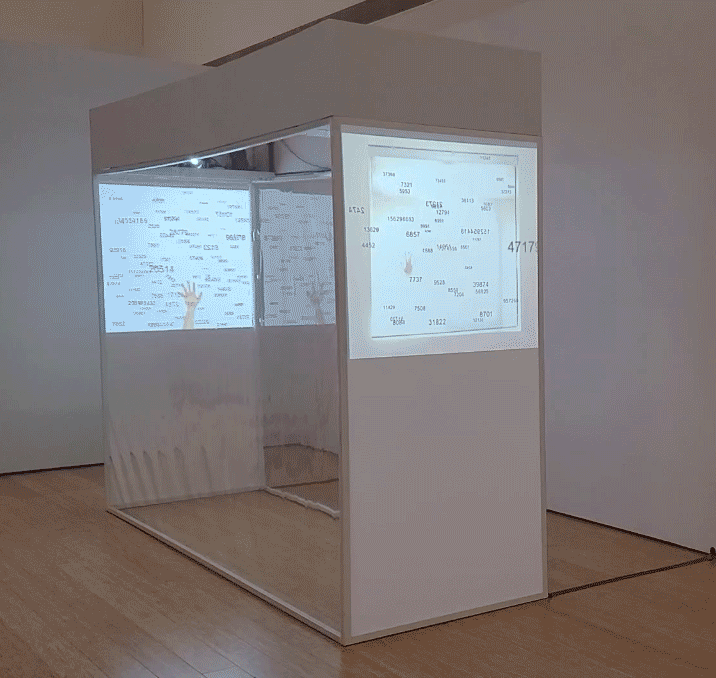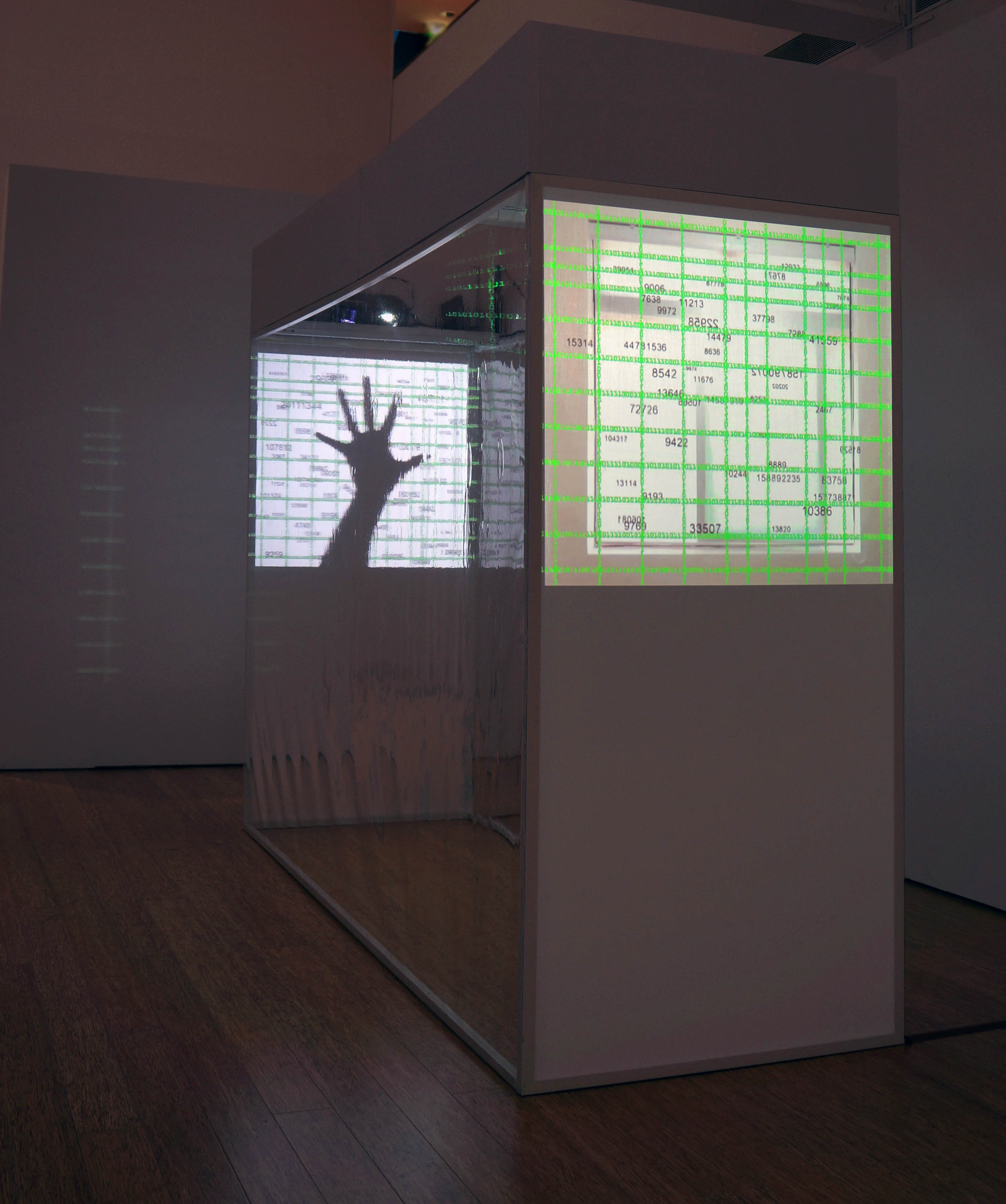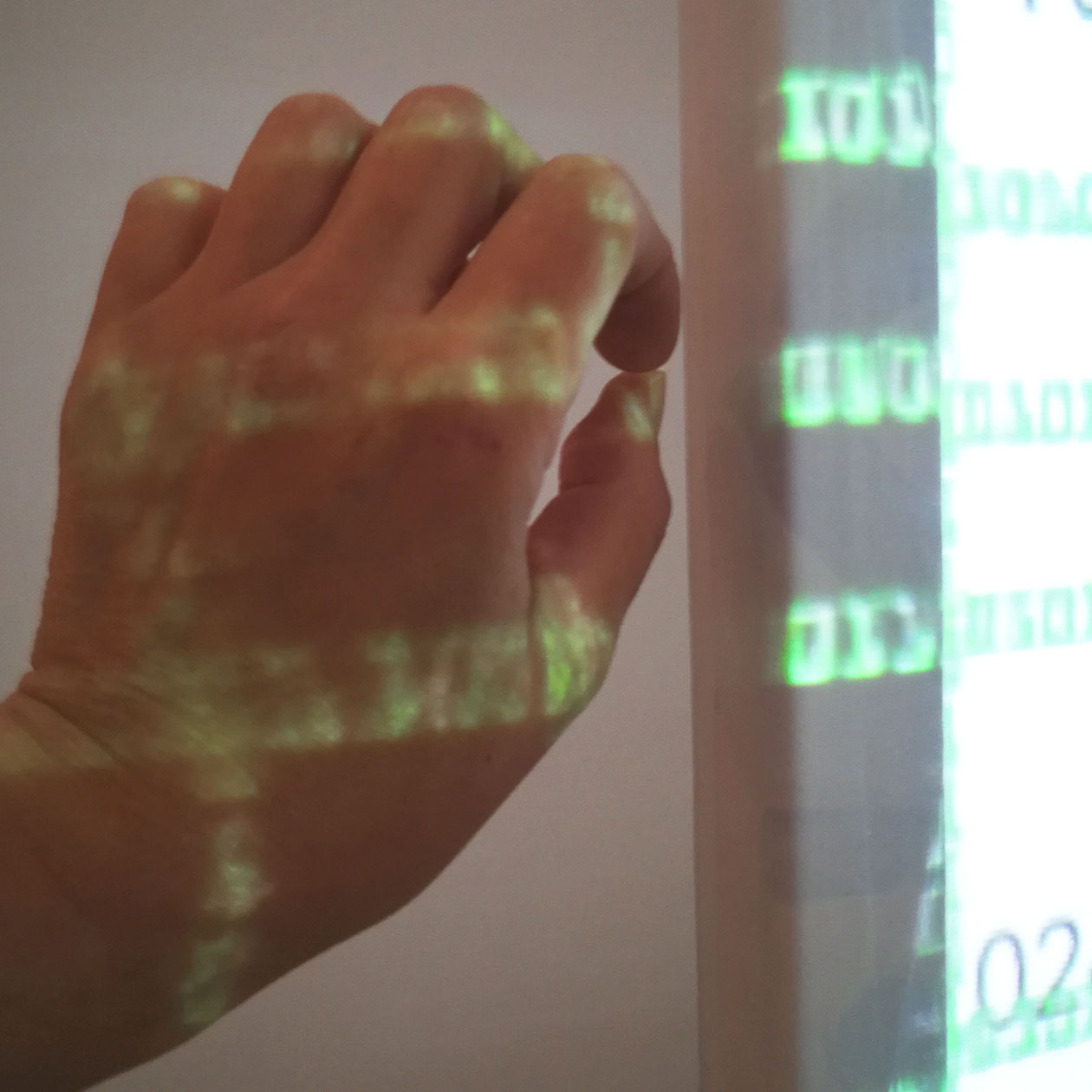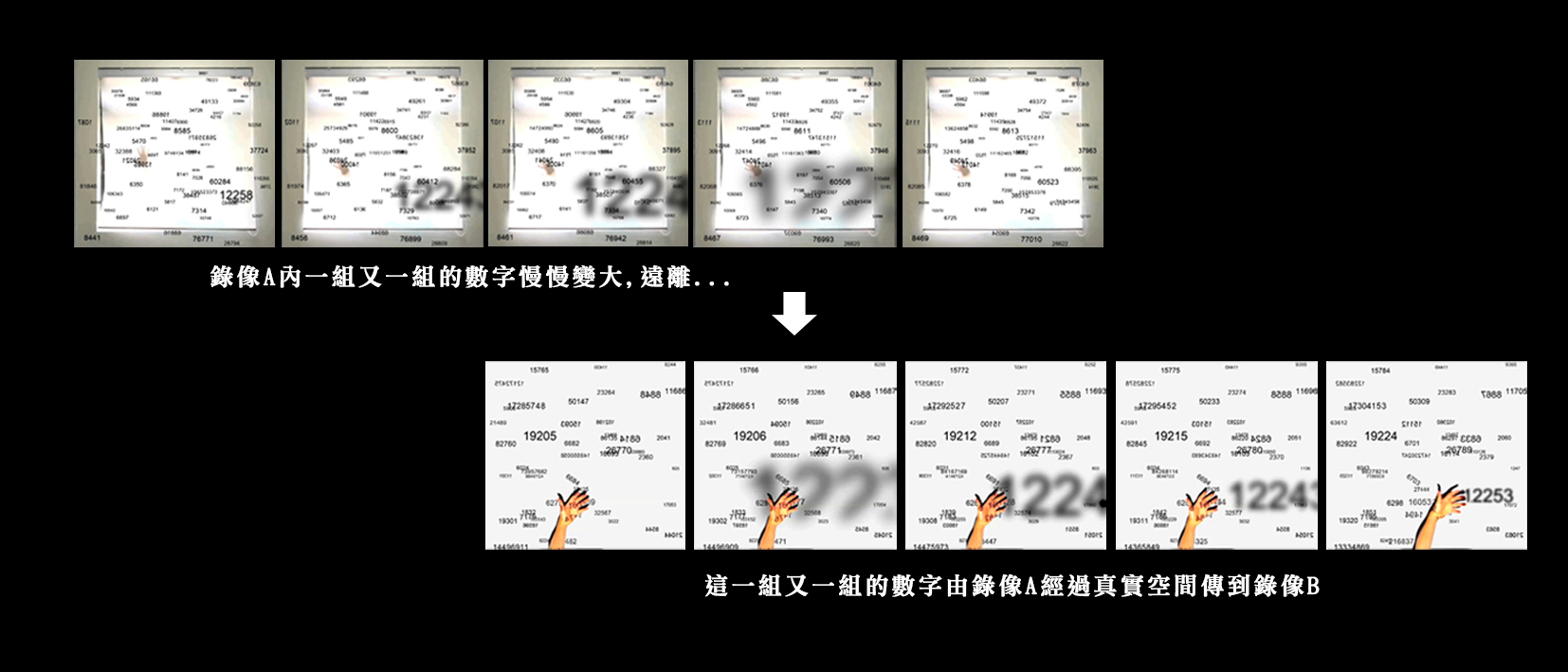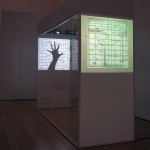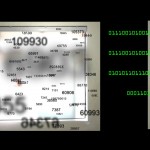Numbers Anxiety – Casting Shadow, Finding Light
>> video part: 2 pieces of video work (6’21”, colour, sounds)
>> Installation part: (L)2.7m x (W)1.1m x (H)2.3m (metal frame, white cloth, transparent acrylic, wood plate, video projector x 2, headphones x 2)
The Coronavirus (COVID-19) pandemic has spread across the globe and continued to affect our lives. According to the latest figures as of 6:43PM on 26th October 2021, there are 244,935,290 cumulative confirmed cases, and a death toll of 4,972,724. In order to prevent the pandemic from spreading, many countries have imposed a national or localised lockdown, which have drastically reduced the international trade and population flow. People need to maintain the social distance in the public areas, and commercial and public lives are also restricted. In 2020, the global GDP recorded a negative 4.4%, and the global trade volume fell by 5.3%. About 255 million jobs were lost worldwide, and all global working hours were reduced by 8.8% last year. According to the report of the United Nations International Labour Organization, the unemployment rate was 8.7% for young people between 15 and 24 years old, and 3.7% for adults…
The ups and downs of different sets of numbers reported from various media have entangled our lives for more than a year. We are like being trapped in a numbers anxiety plight. So far, there is no sign of ending the pandemic for the time being.
Simultaneously, due to the popularisation of smart devices, our daily lives have gradually become digitalised. Due to the pandemic, we need to keep the social distance and work from home. Also, the quarantine polices and reduced outings (regardless of whether local or international) have transformed many of our activities and exchanges into digital information transfer in virtual space that is carried out through ‘0’ and ‘1’. The aggravating dependence on the digital information, which will become another hidden anxiety for us, not only increase our sense of isolation between people and between people and the real world, but also determine every part of our lives, such as our identity, our movement, our existence, etc. All of such data has to be provided through the non-physical space. Therefore, human beings around the world are now facing a progressively digital planarisation and virtualisation.
The rapid spread of this pandemic is precisely the consequence of the increasingly frequent population movements worldwide and economic globalization. It seems that no one in the world is immune to being bound to a similar living condition and mental state. The concept of ‘globalisation’ is now even more profound due to this pandemic.
When there is light, there will be shadow.
Shadow is a flat area of shade produced by light shining on an object. The size, shape, and sharpness of the shadow depend on the strength of the light source, the angle of projection, the distance from the object, and the texture and shape of the place where it is projected. In the real world, as long as there are light and physical objects, the shadow will always exist. But it may be possible for us to overlook or ignore the shadow due to our position and angle, or when the object is too flat or too close to the projection surface.
In contrast to the bright light, the shadow is regarded as the dark side coexisting with the light. This video installation arms to urge people to think about the current state of life by adopting light and shadow (video projection itself is a combination of light and shadow). Even while you are in the haze of ‘numbers anxiety’, you need to face and even actively look for the dark side. Because the shadow will never appear out of the void, it always tells that the other end is the light. Furthermore, shadows are created because of the existence of physical objects. In the virtual world, shadows do not exist. Therefore, the appearance of shadows has become an important element for us to perceive the existence of physical objects and the real space.
exhibition:
